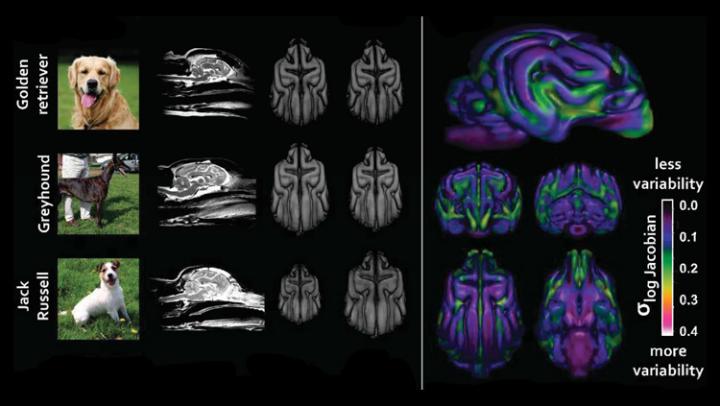Humans have bred various lineages of domestic dogs for multiple tasks, such as hunting, herding, guarding, or companionship. These behavioral contrasts must be the consequence of hidden neural differences; however, shockingly, this subject has gone mostly unexplored.
A recent study examined whether and how selective breeding by humans has altered the gross organization of the brain in dogs. The research has shown that dog brain structure varies across breeds and is correlated with specific behaviors.
More than a few hundred years, people have specifically bred dogs to express specific physical and behavioral characteristics. Scientists explored the impacts of this selective pressure on brain structure by examining magnetic resonance imaging scans of 33 dog breeds. The team observed a wide variety in brain structure that was not just related to body size or head shape.

CREDIT
Hecht et al., JNeurosci 2019
Scientists then examined the areas of the brain with the most variation across breeds. This generated maps of six brain networks, with proposed functions varying from social bonding to movement, that was each associated with at least one behavioral characteristic. The variation in behaviors across breeds was correlated with anatomical variation in the six brain networks.
Studying the neuroanatomical variation in dogs offers a unique opportunity to explore the evolutionary relationship between brain structure and behavior.
The research is published in JNeurosci.
